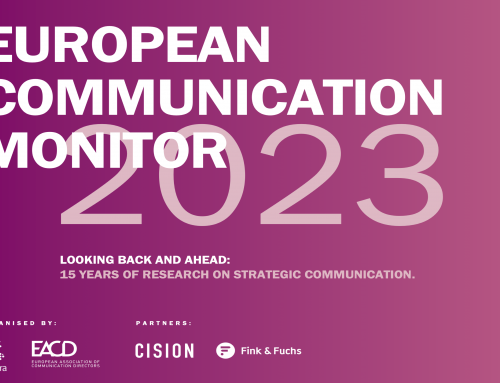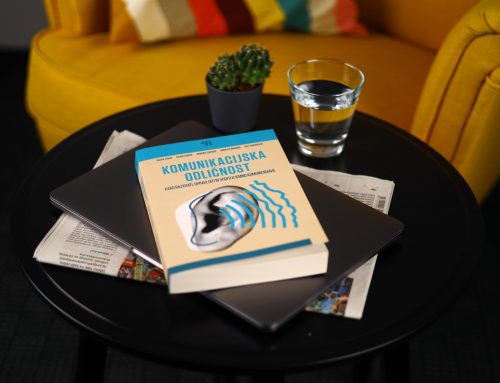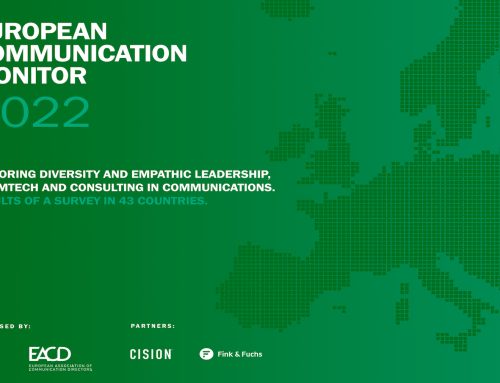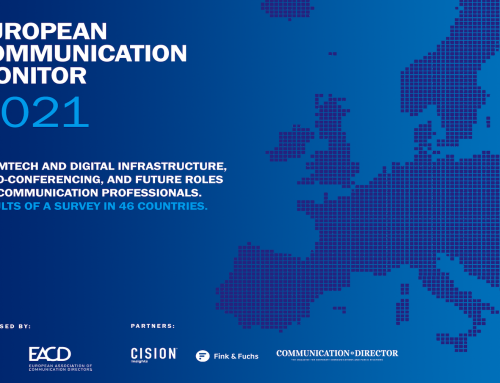This year’s European Communication Monitor was launched and discussed during the European Communication Summit 2017 today on June 15 in Brussels. A prominent panel featuring Jeff Burridge, Vice President and Head of Digital Communications Operation at Airbus, Toulouse, highlighted and reflected findings of the ECM 2017. Professor Ralph Tench from the research team noted that the study is based on responses from 3,387 senior professionals from every European country – a new record.
The survey reveals that even though the professionals are fully aware of the visual trend in society, every second professional has limited visual competencies. The data also demonstrated that the phenomenon of social (ro-)bots is largely neglected by many communication professionals in Europe. Only one third follow the debate about social bots and 15.9 per cent have no idea about the topic at all. In this context social bots are mainly seen as a threat for public debates and organisational reputation alike, although four out of ten respondents do also see opportunities arising from them.
Moreover, the ECM 2017 asked how the hyper modern paradigm might influence the work environment of communication professionals. A hypermodern society is a society in overdrive, characterised by a culture of hyper consumption, hyper change, and hyper individualism. A large majority of 71.5 per cent witness the cultural transformation towards a hyper modern culture in their country. The transition from a postmodern to hypermodern culture is the strongest in consultancies (57.2 per cent) and private companies (51.8 per cent). Organisations with postmodern and hypermodern characteristics are ahead in sensing the trend towards an overarching consumer mentality and are much stronger involved in societal debates. Most of them think that it has already changed and will continue to change the communication with their stakeholders.
Visual trend offers huge potential for strategic communication
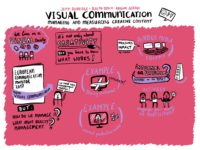 The fact that we live in a visual society and social media and mobile communication boost all types of visuals is clearly observable and broadly recognised by European communication managers. However, 53.3 per cent of the surveyed professionals have low visual communication skills – compared to 12.1 per cent with high visual competencies. That is also true at the organisational level. More than 80 per cent of the professionals have implemented standard guidelines for their visual communication. However, only 36.7 per cent have developed advanced guidelines and less than five per cent have advanced management processes for visual communication.
The fact that we live in a visual society and social media and mobile communication boost all types of visuals is clearly observable and broadly recognised by European communication managers. However, 53.3 per cent of the surveyed professionals have low visual communication skills – compared to 12.1 per cent with high visual competencies. That is also true at the organisational level. More than 80 per cent of the professionals have implemented standard guidelines for their visual communication. However, only 36.7 per cent have developed advanced guidelines and less than five per cent have advanced management processes for visual communication.
Airbus, however, as shown in a case study at the summit, has developed a broad set of strategies and instruments to enhance visual communication. These range from DIY-Tools for internal communications to professional videos used for viral campaigns.
Social (ro-)bots are largely neglected in Europe
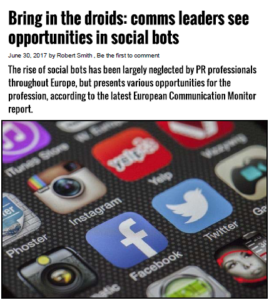 Despite the growing commercial and political application of social bots findings from the ECM 2017 data demonstrate that this phenomenon is largely neglected by many communication professionals in Europe. Only one third follow the debate about social bots and 15.9 per cent have no idea about the topic at all. In this context social bots are mainly seen as a threat for public debates and organisational reputation alike, although four out of ten respondents do also see opportunities arising from them. 73.2 per cent of all respondents agree that social bots present ethical challenges for the profession.
Despite the growing commercial and political application of social bots findings from the ECM 2017 data demonstrate that this phenomenon is largely neglected by many communication professionals in Europe. Only one third follow the debate about social bots and 15.9 per cent have no idea about the topic at all. In this context social bots are mainly seen as a threat for public debates and organisational reputation alike, although four out of ten respondents do also see opportunities arising from them. 73.2 per cent of all respondents agree that social bots present ethical challenges for the profession.
Hypermodernity challenges old paradigms in communications and for organisations
A hypermodern society is a society in overdrive, characterised by a culture of hyper consumption, hyper change, and hyper individualism. A large majority of 71.5 per cent of the European communication professionals witness the cultural transformation towards a hyper modern culture in their country. The transition from a postmodern to hypermodern culture is the strongest in consultancies (57.2 per cent) and private companies (51.8 per cent). 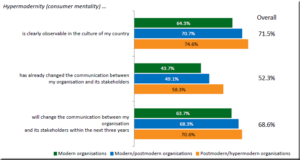 Organisations with postmodern and hypermodern characteristics are ahead in sensing the trend towards an overarching consumer mentality. Most of them think that it has already changed communication with stakeholders and a large majority thinks that it will change their communication in the next three years.
Organisations with postmodern and hypermodern characteristics are ahead in sensing the trend towards an overarching consumer mentality. Most of them think that it has already changed communication with stakeholders and a large majority thinks that it will change their communication in the next three years.
Quality management and benchmarking
Quality management and continuous improvement is less common in communication departments and marketing, compared to other organisational functions. If communication departments assess their activities at all, they focus predominantly on the performance or impact of messaging activities. Holistic benchmarking approaches against externally validated standards seem to be less relevant.
Statements from the EUPRERA lead researcher and the EACD president
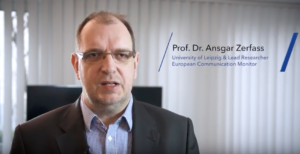 Professor Ansgar Zerfass, lead researcher of the survey, explained:
Professor Ansgar Zerfass, lead researcher of the survey, explained:
“During the last 12 months we have experienced significant events on the world geo-political stage with impact and implications for strategic communication. While the European Communication Monitor continues to track the specifics of the communicator’s role we are also interested in mapping and monitoring the influence of wider societal issues, from economic and cultural developments to technological change, and understand their implications on practice.”
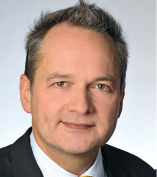 Dr. Herbert Heitmann, president of the European Association of Communication Directors (EACD) added:
Dr. Herbert Heitmann, president of the European Association of Communication Directors (EACD) added:
“What stands out most of all from this year’s Monitor is the recognition of the important operational and strategic contribution that communications makes to an organisation’s success, with more than 70% approval rates, with the communications function emerging as a key supporter for daily management and the operations of other departments. However, top management is not aware of the full range of contributions that communications can deliver. More efforts are necessary to close this expectation gap.”
Report, video and further material available
The PDF report with full results as well as a video featuring highlights from the study as well as more material like 10 Starting Points for Discussion or articles published in the Communication Director Magazine are available here.



